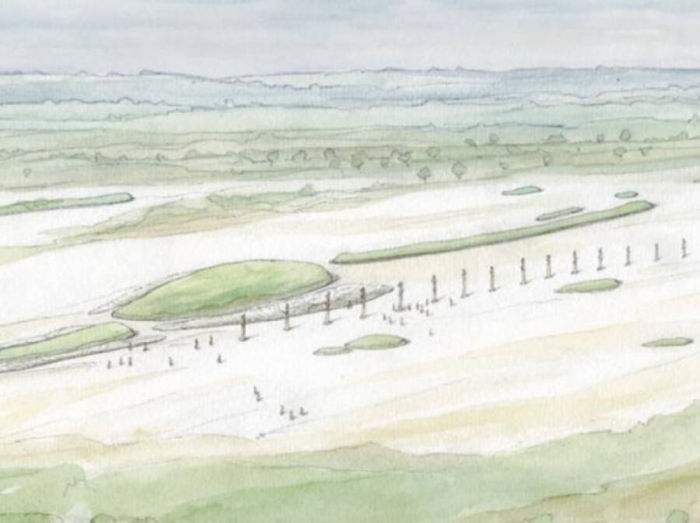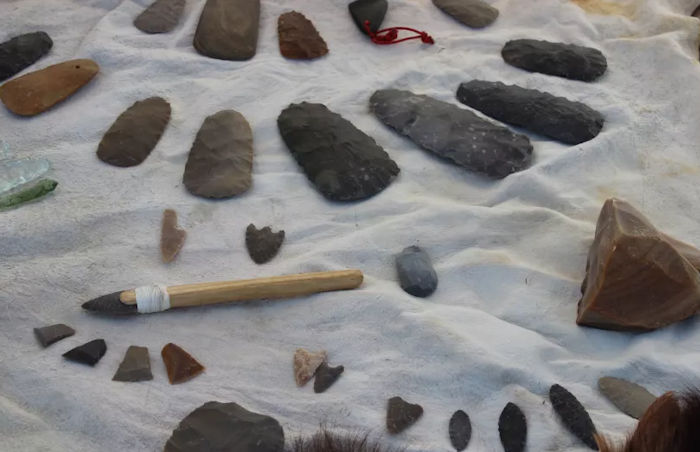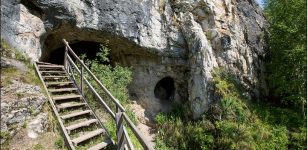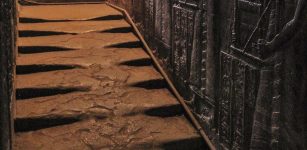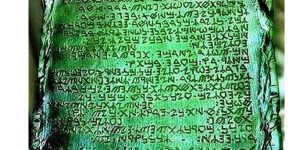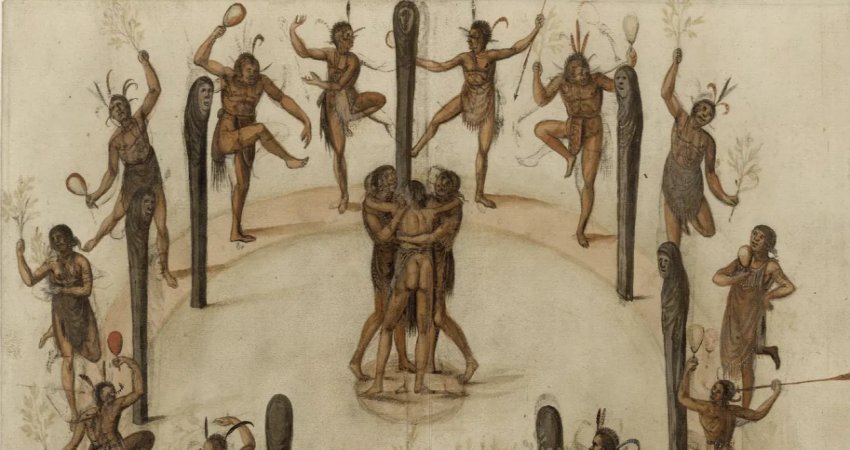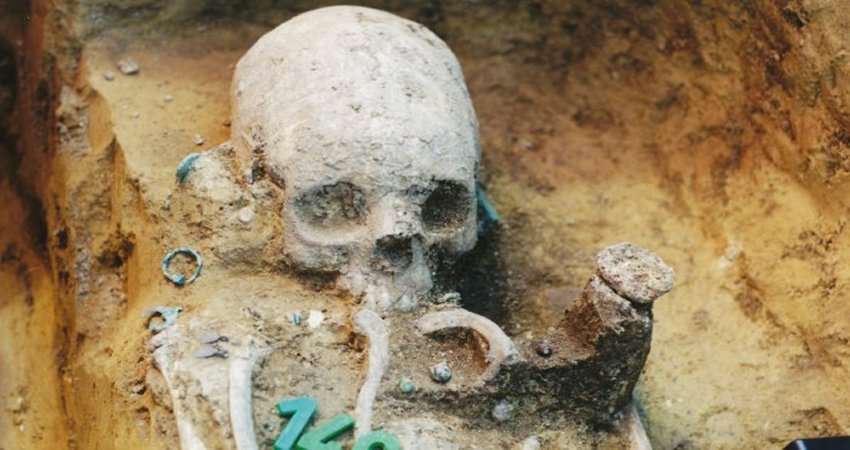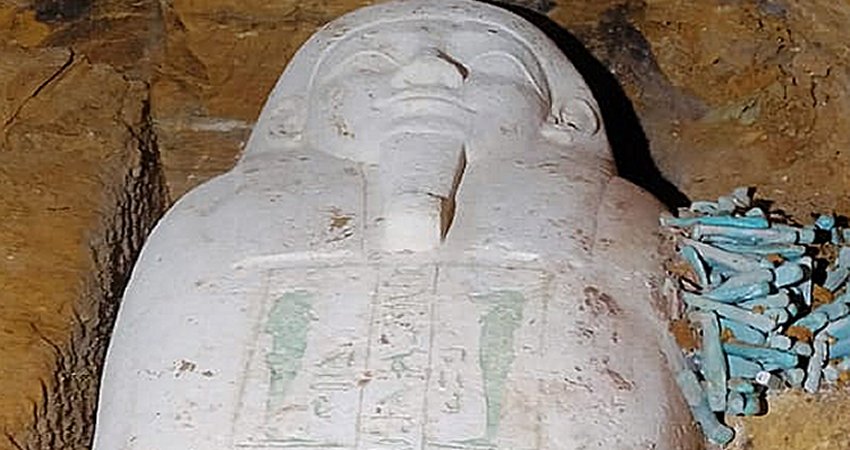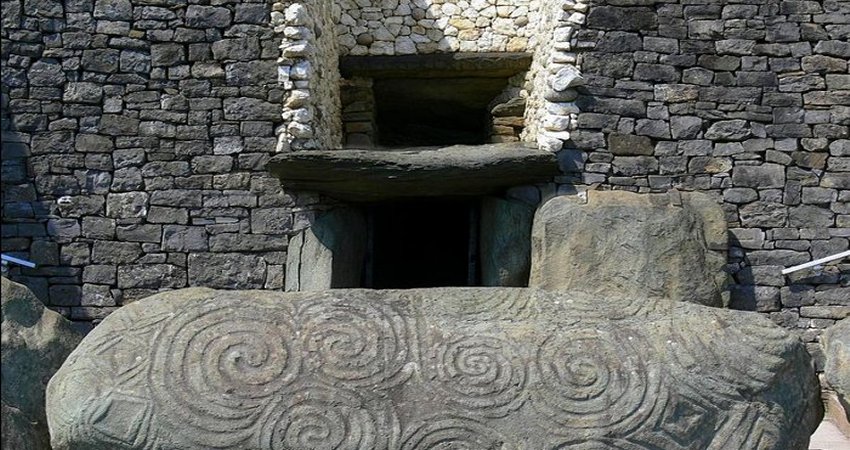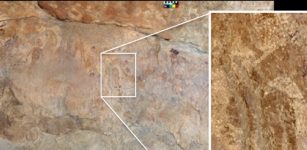Ancient DNA Unravels The Mystery Of Huge 6,500-Year-Old Cemetery And The Tomb Of A ‘Masculine Woman’ In Normandy, France
Conny Waters – AncientPsges.com – The huge Neolithic necropolis in Fleury-sur-Orne, Normandy, France is the resting place for a group of selected individuals who were buried in impressively long monuments.
The Neolithic necropolis in Fleury-sur-Orne, Normandy, France. Credit: François Levalet / Inrap
The cemetery from the Middle Neolithic (4500 BC) discovered in the 1960s contains around twenty funerary monuments, including one still intact burial mound. The necropolis covers approximately 24 hectares with barrows as long as 372 meters. During the Middle Neolithic, new types of funerary monuments appear: earth and wood constructions whose length varies from a few dozen to several hundreds of meters.
These monumental graves, the first of this type, are called “from Passy” after the eponymous site in the Yonne Department. These big, elongated monuments are delimited by trenches that are sometimes associated with a palisade. They surround a burial mound containing the tomb of prestigious persons. In contrast to earlier traditions, these funerary monuments suggest the emergence of a new social hierarchy.
How the graves in Fleury-sur-Orne may have looked when they were first dug by Cerny society some 6,500 years ago. Credit: Laurent Juhel/Rivollat et al, PNAS
In Fleury-sur-Orne, around twenty monumental tombs have been identified by the archaeologists. Their size and morphology is varied: from 12 m to 00 m long, surrounded by trenches from 20 cm to more than 15 m wide.
A recent DNA study of the skeletons unravels the mystery of who was buried in these extraordinary graves.
It was previously known that each monument was designed to hold a few graves, or often a single individual.
Contemporary with the large dolmens on the Atlantic coast, the monumental tombs of Fleury required considerable work and resources for the benefit of just a few, and thus reflect the emergence of social differentiation. Now, scientists have learned more about the lineage of the human groups who are buried at the site.
The only woman at the Fleury-sur-Orne cemetery was buried with flint arrowheads, which may have indicated she was “symbolically male,” researchers say. Credit: Laurent Juhel/Rivollat et al, PNAS
By integrating genomic and archaeological data scientists have been able to determine that the earliest individuals buried at Fleury-sur-Orne match the expected western European Neolithic genetic diversity, while three individuals, designated as genetic outliers, were buried after 4,000 calibrated B.C.
“We hypothesize that different, unrelated families or clans used the site over several centuries. Thirteen of 14 of the analyzed individuals were male, indicating an overarching patrilineal system. However, one exception, a female buried with a symbolically male artifact, suggests that the embodiment of the male gender in death was required to access burial at the monumental structures,” the researchers write in their study published in Proceedings of the National Academy of Sciences.
The cemetery was built by the Cerny culture, a Neolithic culture in France that dates to the second half of the 5th millennium B.C. and that is particularly prevalent in the Paris Basin. It is characterized by monumental earth mounds, known as enclosures of the Passy type.
Scientists examined the remains of 19 skeletons found at the site, 14 of which were in a well-preserved condition allowing a DNA analysis.
All of the studied skeletons were male, except one. The results of the study showed that the people buried in the barrow were not related to each other, except for one case of a tomb that contained the remains of a father and his son.
Replicas of the arrowheads and other flint objects found in the barrows at Fleury-sur-Orne. Credit: Laurent Juhel/Rivollat et al, PNAS
One of the most curious tombs contained the skeleton of a woman who was surrounded by arrowheads which scientists suggest indicate she was likely considered to be masculine enough to be buried with the men.
See also: More Archaeology News
“A single female buried with an arrowhead, otherwise considered a symbol of the power of the male elite of the Cerny culture, questions a strictly biological sex bias in the burial rites of this otherwise “masculine” monumental cemetery,” the science team concludes in their paper.
Written by Conny Waters – MessageToEagle.com – AncientPages.com Staff Writer


